Reviews
Erich von Stroheim
USA, 1929
Credits
Review by Evan Kindley
Posted on 01 September 2009
Source Kino DVD
Categories Oh, the Depravity! The Cinema of Erich von Stroheim
Unfinished works have a special sort of charm: existing somewhere between pure speculation and potentially disappointing reality, they suspend judgment and invite imagination. The example I tend to think of is F. Scott Fitzgerald’s The Last Tycoon, a brilliant novel left only partially realized at the time of the author’s death, that concludes with an assemblage of sketches, plans and scholarly guesswork taken from a variety of archival sources. This sudden deterioration of a healthy work of art produces its own kind of aesthetic effect, especially if what precedes the breakdown has been especially involving. We’re pulled out of the action, and made to focus on the very contingent circumstances that lead to art being created in the first place. Depending on your temperament, such a failure may be frustrating, or it may open up the work in a new way, reminding us of the almost unlimited possibilities lurking in any effective creative undertaking.
Erich von Stroheim’s Queen Kelly is perhaps the most famous example of an unfinished work in the history of the cinema (though other examples come to mind, like Orson Welles’ Magnificent Ambersons and, by some accounts, Stanley Kubrick’s Eyes Wide Shut). Intended to be von Stroheim’s masterpiece, it fell afoul of budget issues, Production Code censorship, an unhappy star and, most damagingly, the advent of motion picture sound. What survives is, at best, an approximation of what the director had in mind. It is estimated that the movie as scripted would have come to 30 reels (or approximately five and a half hours); in the event, von Stroheim only filmed about a third of the story, adding or extending many scenes as he went along. Set in the fictional European city of Kronberg, it tells the story of Wild Wolfram (played by Walter Byron) the Prince Regent, who is engaged to be married to Queen Regina V, but — as we learn when we first see him being pursued by a pack of lascivious, flapperish ladies — has not quite given up on his bachelor lifestyle. Von Stroheim always enjoyed mocking the excesses of aristocratism, and the opulent, brightly lit palace set offered plenty of elements for the director to play around with: nervous footmen in livery, chandeliers, bottle after bottle of flowing champagne, enormous bedchambers, and circular tubs with sculpted cherubs around their bases. The film is so clearly an artifact of the late twenties that the term “decadence” could have been coined just to describe it, and von Stroheim’s obsessive perfectionism (the crew was apparently forced to work around the clock, sleeping on set) pays off: every frame is crammed with elegance and energy in equal measure, going to great lengths to marry classical beauty with a swarming, distinctively cinematic sense of human movement.
But back to the plot: on an outing in the countryside, Wolfram encounters a group of nuns making their way and strikes up a flirtation with the saucy, tempestuous Kitty Kelly, played by Gloria Swanson. While supposedly an innocent Catholic girl, Kelly is game enough to remove her underwear for the Prince’s benefit (or maybe they fall off accidentally — it’s not quite clear). “You’ve lost your er-er-whatnots,” he tells her, and she responds by playfully flinging said whatnots in his face. You don’t forget a girl like that, and the Prince soon arranges to spend more time with Kelly by burning down her convent and abducting her to his palace. After such a wildly bizarre meet-cute, the relationship between Wolfram and Kelly settles down into some of the more plausible sexual chemistry of the early film era, thanks in no small part to a vivacious, affecting lead performance by Swanson. Years away from the imposing presence of Sunset Boulevard, Swanson is beautiful and impressively naturalistic in Queen Kelly (though it’s true she doesn’t quite pass for a schoolgirl), and her rapport with the raffish Byron puts the dialogue-aided interactions of many a romantic comedy star, past and present, to shame. One of the highlights of this part of the film is a delightful scene in which Swanson and Byron flirt directly into the camera, a surprisingly effective device that I don’t think I’ve seen in any other movie (maybe it’s time for somebody to revive this?). Later on, a nightmarish encounter with Queen Regina (in which we learn that Wolfram is, quite literally, whipped) drives Kelly from the palace and to the brink of suicide, but she survives to pine another day.
This is the longest continuous completed section of Queen Kelly. From here we get some suggestive stills and explanatory intertitles which serve as a bridge to the only other extended sequence shot by von Stroheim. This footage, discovered by Henri Langlois in 1963, features Kelly in Dar-es-Salaam, where she is dispatched to visit a dying aunt. Here she comes into contact with Jan Vryheid (played by The Merry Widow’s Tully Marshall), a crippled brothel owner who sort of resembles a degenerate Pee Wee Herman, flanked by two reportedly authentic prostitutes. From the evidence of these scenes, von Stroheim was pushing the film’s second half in a darker, more expressionistic direction, away from the playful comedy of the early scenes and towards something not miles away from the early surrealist work of Luis Buñuel or even a latter-day practitioner like Guy Maddin. The African scenes are the really revelatory sections of Queen Kelly, at once the most frustrating (because they lack a narrative context, and are so out of keeping with the earlier scenes) and the most fascinating (for pretty much the same reasons). A disturbingly endless wedding ceremony, conducted for some reason over the aunt’s deathbed, is left ultimately unresolved, and Swanson’s visible discomfort — according to one story, she walked off the set after von Stroheim directed Tully Marshall to drool on her hand — only adds to the strange power of the sequence.
Who knows how far von Stroheim might have gone with his Gothic tendencies if producer Joseph Kennedy hadn’t withdrawn funding, supposedly at Swanson’s insistence? (An excised portion of the script included on the Kino DVD, which has Jan sacrificing Kelly and Wolfram to a swamp full of hungry crocodiles, may be some indication.) It’s hardly likely that the final product would have been completely coherent, but it would certainly have been watchable — and it’s possible that the combined talents of von Stroheim and Swanson would have somehow made such a strange, ambitious narrative work. As it is, we have about an hour of a highly effective, if slightly warped, Cinderella story, and then a hint of something much riskier and more promising: a kind of Grand Guignol Heart of Darkness.
The fullest available version of Queen Kelly cuts off after these scenes, giving us only the barest thumbnail sketch of what was meant to follow. (For those interested in piecing it together more fully, von Stroheim’s complete screenplay was published in 2002.) That’s not quite the whole story, however. A few years after production was shut down on Queen Kelly, Gloria Swanson, fresh from the success of The Trespasser, was given the opportunity to complete the film by adding an ending of her own devising. This sudden, and out-of-place, “Swanson ending” (taking a page out of Romeo and Juliet, and shot by future Citizen Kane cinematographer Gregg Toland) is included in the extra features on the DVD, along with a charmingly rambling reminiscence by the star herself, shot for public television in the 1950s, called “Gloria Swanson Remembers.” (Swanson’s ending was dismissed by von Stroheim, who called it “illogical and ridiculous” — a bit rich coming from him.) This version was released in Europe in the early 1930s, but was not seen in America until Billy Wilder incorporated footage from it in Sunset Boulevard, sparking a public interest in it that eventually led to its re-release in 1957. A version incorporating the Dar-es-Salaam material didn’t see light until 1985. This would seem to be the final incarnation of Queen Kelly — as final as we’re going to get, at any rate, though there’s always the remote possibility that more footage will materialize somewhere, necessitating yet another edit. It may not be a masterpiece, but it does what more masterpieces ought to do: it galvanizes the imagination, and leaves you wondering about what’s still left to be done.
More Oh, the Depravity! The Cinema of Erich von Stroheim
-

Blind Husbands
1919 -
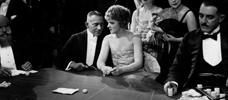
Foolish Wives
1922 -
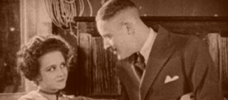
Merry-Go-Round
1923 -
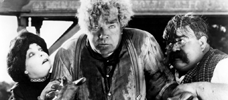
Greed
1924 -
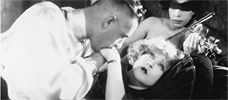
The Merry Widow
1925 -
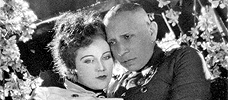
The Wedding March
1928 -
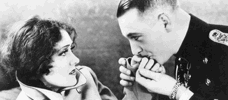
Queen Kelly
1929 -
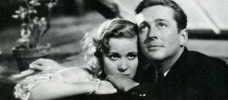
Hello, Sister!
1933
We don’t do comments anymore, but you may contact us here or find us on Twitter or Facebook.



